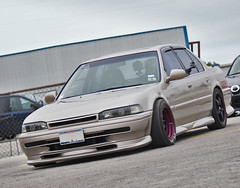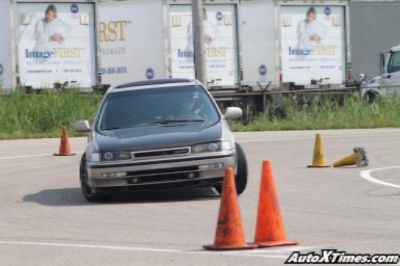Hi, I'm looking to hear from someone who has actually done this task or at least who has talked to someone who has done it(no theory). A few of my spark plug gaskets got knocked loose while I was doing my valve lash adjustment. One of them is totally knocked off the head, a couple of them are breaking free but are still partially stuck to the head. I'll probably leave those couple alone because they are still in the right position on the head and once the valve cover is retorqued they will probably seal fine. (somebody correct me if I'm wrong).
It looks like the seals had no rtv or sealant originally, probably the new rubber ones just seat on the head and stick there I'm guessing. But now they've been broken free by my wrenching. (next time i'll use and offset 10mm wrench for the valve lash and that will avoid the whole issue--i was using a straight-handled 10mm and kept knocking into the spark plug gaskets as I was doing the job)
I'm planning on reseating/repositioning the one that broke completely free. How to best go about it? I am thinking, clean the seating surface and the gasket with brake cleaner on a rag, put a very thin layer of either red permatex (650F intermittent) RTV on the bottomn of the seals, or hondabond, seat it in the valve cover, then install the valve cover.
Does this sound like the right way to go? and which would be better, red RTV or hondabond, or something different.?
Thanks in advance for your help.
It looks like the seals had no rtv or sealant originally, probably the new rubber ones just seat on the head and stick there I'm guessing. But now they've been broken free by my wrenching. (next time i'll use and offset 10mm wrench for the valve lash and that will avoid the whole issue--i was using a straight-handled 10mm and kept knocking into the spark plug gaskets as I was doing the job)
I'm planning on reseating/repositioning the one that broke completely free. How to best go about it? I am thinking, clean the seating surface and the gasket with brake cleaner on a rag, put a very thin layer of either red permatex (650F intermittent) RTV on the bottomn of the seals, or hondabond, seat it in the valve cover, then install the valve cover.
Does this sound like the right way to go? and which would be better, red RTV or hondabond, or something different.?
Thanks in advance for your help.






Comment